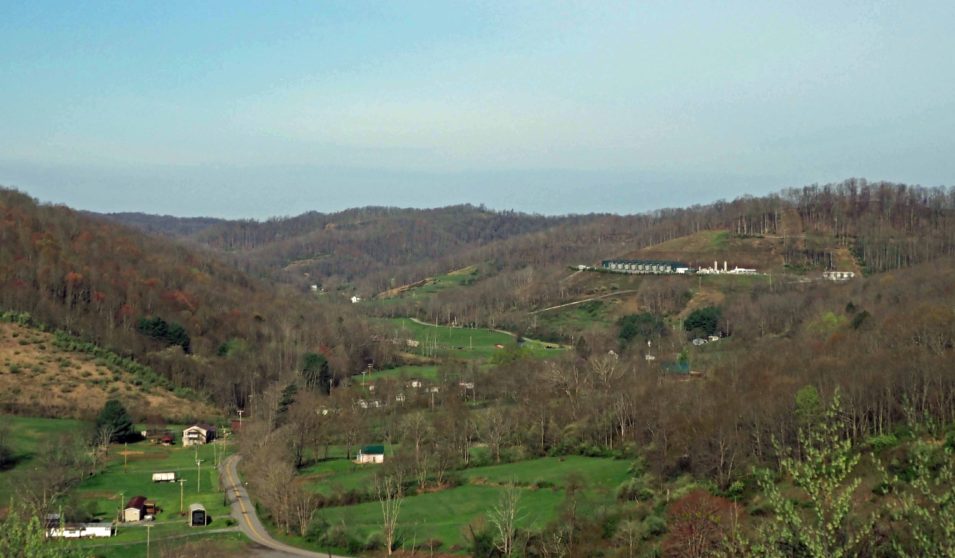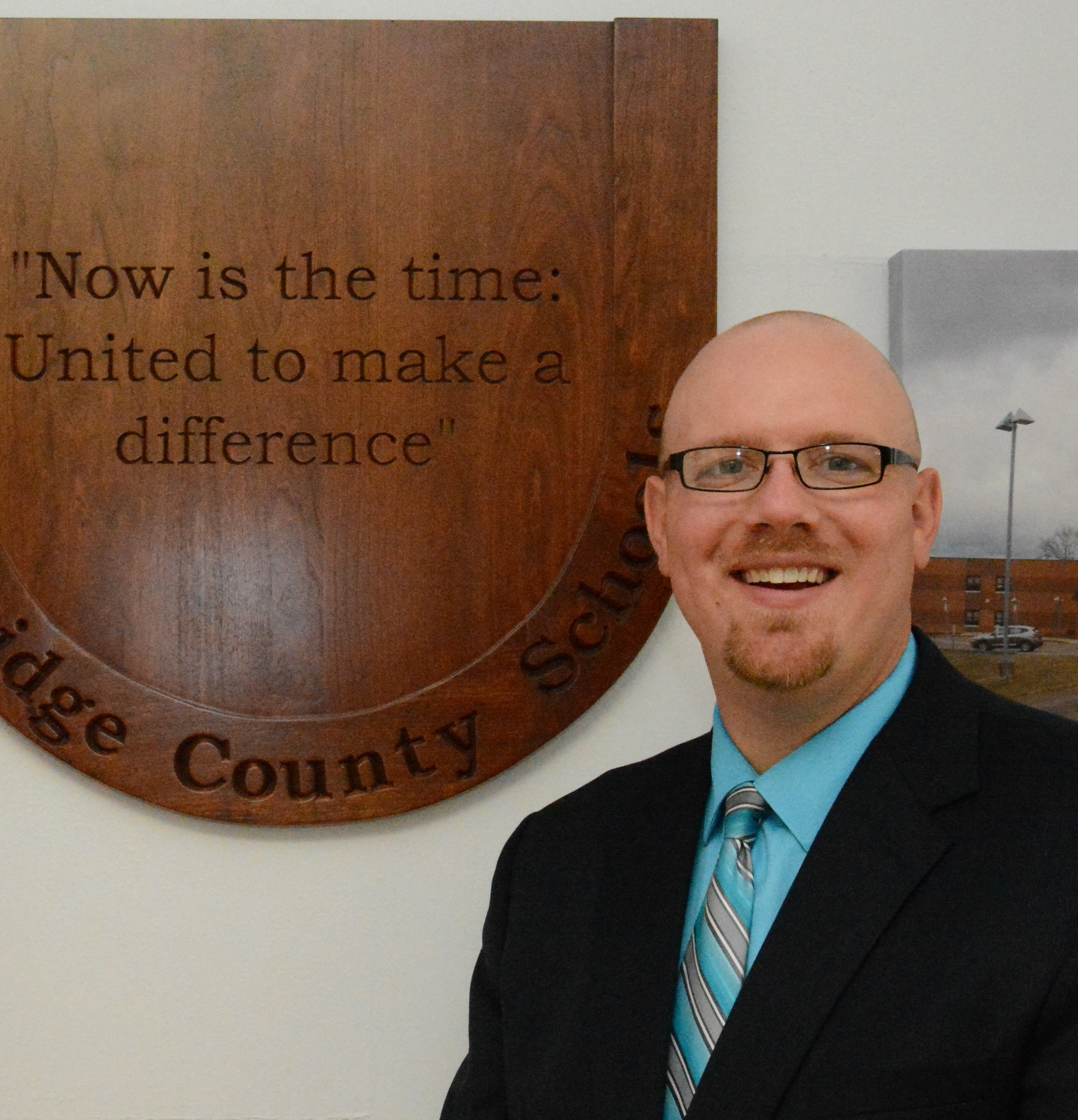
Written by John Glasgow
Originally published to the Rural Schools Collaborative website here.
Over the course of the Coronavirus pandemic, the I Am A Rural Teacher campaign, a joint national advocacy project between the National Rural Education Association and the Rural Schools Collaborative, has had the privilege of sharing countless perspectives on how schools and communities across the country are adapting to the task at hand. From these many wonderful glimpses into daily life, an emergent theme seems to connect these experiences: that the unique characteristics of each and every rural school and community have turned into invaluable assets for people striving to not just endure, but to truly come out stronger and more resilient than before—this theme is no less true for the schools of Doddridge County, West Virginia.

Surrounded by the verdant forests and peaks of the western Appalachian Mountains, the long history of Doddridge County has often followed the boom-bust cycles of various extraction industries. The oil and gas industry, in particular, has been a central fixture of the county since the late 1800s. While the relationship between the two has not always seen good times, Doddridge County Schools superintendent, Adam Cheeseman, explains that the current boom is allowing the school district to grow in directions they have long dreamed of heading, especially with the new challenges brought on by COVID-19:
“In the last eight to ten years, the community has begun to see a little bit of a shift, mainly because of the resurgence of the oil and gas industry…What that’s allowed for us to do are some creative and innovative things because of the tax base this industry has established.”
Cheeseman, a native of nearby Wirt County, is no stranger to the reality families in Doddridge County face. “The community at large is still very rural, and has a significant percentage of poverty,” Cheeseman explains, “just because the school has money…that doesn’t mean our people and the quality of life has necessarily changed—but that’s what we’re trying to do.”
Even before COVID-19 prompted rural schools nationally to assume an even larger role in providing for community health and wellbeing, Cheeseman and his district team were already redefining the role and function of Doddridge County Schools through their mission statement of "United to Make a Difference."
“Undoubtedly we are the hub of our community. There is no question about it, and that’s what we have attempted to do—the city, board of education, and myself—to put these monies back into the community. 90% of our excess levy comes from class 3 and class 4 property taxes—oil and gas taxes. Not a lot of that cash flow bleeds over into the community, so what we’re trying to do through the school system is to channel this funding and push it back out to student achievement and give our kids the best, but also try to impact the community at large as well.”
Cheeseman’s strategy for this has been to divert this funding into tangible, long-term projects, programs, and facilities, explaining that they “want to do something sustainable for the community, something kids can be proud of, not one-time expenditures. We’re trying to invest in ways so that, if the bust comes, we aren’t left out in the air.”
In the four years since Cheeseman joined the district, he and his team have already accomplished a dazzling array of projects, ranging from offering free admission to school events and instituting ground-breaking childhood development programming, to the construction of a new stadium, an athletic complex, a career and technical education facility, an early-childhood building, a student activity center, and an administrative office along with the purchase of a nearby farm—all with the goal of providing every opportunity possible for students.
The result this concerted development effort being that Doddridge County Schools now rank 4th out of 55 districts in the state for academic achievement, after ranking 53rd only a decade ago. In addition, the school now hosts the top graduation rate in the state of West Virginia.
As the pandemic spread and states ordered schools closed, Doddridge County Schools were forced into a new virtual environment. While this transition didn’t shutter the district’s ambitious community investment efforts, it has meant that the new facilities and programs offered to students are not being used to their full potential.
Hoping to provide students with the environment and opportunities they need, Cheeseman says that himself and a coalition of administrative, educator, and community representatives have been tirelessly crafting the reopening plan for the district. Expecting roughly 1000 of the 1200 students in the district to opt for in-person instruction, Cheeseman details a “stagger-start” tactic they have chosen to bring kids back to the classroom:
“On September 8th, kindergarten, 5th grade, and 9th grade will start since they are students in transitional years and we want to try and get them acclimated to new buildings and a new normal. The next day, it’ll be 1st grade, 6th grade, and 10th grade. The next day we’ll add three more grades and so on through the rest of the week. Our first full day, with all grades, will be September 14th.”
While the county has largely avoided the effects of the pandemic, only reporting itsfirst confirmed case of COVID-19 on July 25th, Cheeseman still expects at least 200 students will seek virtual education options, with perhaps more to follow as time goes on. While at home, Cheeseman reveals that students can make use the e-learning service operated by the state of West Virginia, complete with its own instructors and materials. For families requesting a more home-grown option, he says that the district is developing its own virtual service as well wherein students can log-in to watch classes in real-time and complete assignments via a third-party platform.
However, Doddridge County, like much of rural America, still lacks the quality internet services required to sustain these types of efforts—and this problem is nothing new. The FCC reports that nearly a third of rural Americans have no access to broadband internet, creating a serious limitation for the academic outlook of rural students. Cheeseman laments that “the digital divide in West Virginia is enormous, and we’re feeling that with the pandemic more than anything.”
Even before discovering the new necessities for education under COVID, Cheeseman and the district took positive action toward resolving this inequality by channeled some of the school’s excess funding into a partnership with county officials and CityNet, a regional internet service provider, to introduce broadband internet access to Doddridge County.
“We’ll be able to close that divide through this project. It doesn’t matter how much money you have, if you lack money, what your name is, or whatever; we’re going to be able to level the playing field—with quality access comes quality opportunity.”

While Doddridge County Schools were forced to go virtual prior to the completion of this ambitious broadband project, Cheeseman confirms that “looking back, it could’ve been far worse. Was infrastructure in place to be completely ready? No. It still isn’t, but the internet infrastructure is getting closer. It should be complete in a year.”
Even with the broadband project not yet at completion, Cheeseman remains confident that Doddridge County Schools will still be able to pull together the resources and opportunities needed to provide the best possible outcome for their students.
“Through it all, we learned that we can do it. We were thrust into a complete unknown. It wasn’t ideal, but we did it.”
While not every rural district in the United States has the same unique characteristics or circumstances of Doddridge County, Cheeseman and his district are much the same as many rural schools across the county in their unceasing efforts to use what’s at hand and do the most good with it:
“The central theme in all of our decisions, whether curricular or fiscal, is that we want to give the most opportunities and the most access for our kids that we possibly can…that’s the environment we want to create, and it’s sustainable.”

